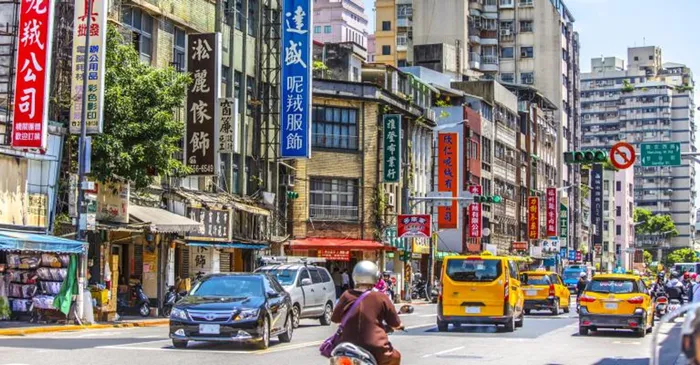Taiwan a model for rural-urban migration

Picture: www.freedomhouse.org – Building transport infrastructure as well as infrastructure for sustaining livelihoods in the rural areas seem to have solved the problem of rural-urban migration, and contributed to the turn-around in Taiwan, the writer says.
By Dr Wallace Mgoqi
Taiwan will celebrate its 111th National Day on October 10 since its establishment. What is of interest to me is how it dealt with the phenomenon of rural-urban migration, and succeeded in turning it around, something that is still haunting us, making the lives of people miserable in both settings, rural and urban.
As a consequence of the failure of the political leadership to deal with the problem, towns and cities are exploding with people from rural areas and elsewhere, who are in search of better living conditions, that do not exist where they come from. The towns and cities have a lure for these people, promising them the hope of a better life.
However, their presence and settlement in areas where there is no infrastructure to carry their numbers is causing a huge headache for town planners and city administrators. People build shacks anywhere there is an open space and often in areas that are hazardous for human settlement. Socio-economic problems emanating from overcrowding, such crime and violence, result in insecurity for all those caught up in these conditions. Falling property values of property owners living in the vicinity of these settlements is another such consequence.
It was heartening to hear that countries like Taiwan and others experienced similar problems and challenges arising from rural- urban migration and found viable and lasting solutions to them.
I learnt recently from interacting with the Director-General of the Republic of China (Taiwan) that they decided to invest heavily, especially in transport infrastructure, as well as infrastructure in the rural areas that would enable those who chose to remain there to have sources of livelihood and enjoy a reasonable quality of life.
They invested heavily in creating highways between the major nodes between the rural and urban areas. For example, a journey say between George and Cape Town, which ordinarily takes four hours would now take two and half or three hours, because of the non-stop highways. Over time this has resulted in young people going to the cities for work from Monday to Friday. They return to the rural areas as they can do so smoothly and seamlessly.
In terms of livelihoods in the rural areas they have over the years invested heavily in infrastructure that can help those areas to have industries and provide employment opportunities for those who choose to remain there permanently, those who prefer rural life to urban life.
Through these pages we have been advocating and harping on the strategic importance of building smart cities in the rural areas to create infrastructure that would enable the land to hold down the people and sustain livelihoods there through its economic usage.
We have cited, among others, the work done currently by the renowned property developer, Mike Nkuna, who is building a smart city in Nkuzana Village, Limpopo, creating thousands of jobs during construction and even more after construction.
We have cited the visionary leadership of the likes of Sol Kerzner, who built Sun City and Lost City out of a barren piece of land, now a vibrant city supporting thousands of households in the area.
We also cited Century City, in Cape Town, a vision of a visionary Martin Wragge, who towards the close of the previous century dreamed of starting a new smart city, on a barren piece of land , a swamp, now known as Century City.
Recently, I spoke to a councillor of the City of Cape Town, who was part of the approval of the plans for this project, at the turn of the century. Today it is a bustling and vibrant city, with every facility you can think of to be found in a modern city.
A combination of building transport infrastructure as well as infrastructure for sustaining livelihoods in the rural areas seem to have solved the problem of rural-urban migration, and contributed to the turn-around in Taiwan.
Some people trapped in big cities are yearning for the quiet and placidity of the country-side, which they only have an opportunity to enjoy at the end of the year. Even then, these areas are under-developed , with little or no infrastructure that would satisfy modern professionals, whose origin and homes are in these areas. Family commitments compel them to visit their families in the countryside at this time.
Countries like Taiwan are presenting us with a model that we would be wise to pay attention to. Because of the size of the problem and the solution for it , it would take the visionary leadership of government to lead it, with the support of the entrepreneurial spirit, skills and expertise residing largely in the private sector.
Government would have the muscle to raise the capital required for building such massive transport infrastructure, through structures like SANRAL and other State-owned entities, as well as the infrastructure for creating livelihoods in the rural areas.
Such public/private co-operation between the government and the private sector would take the country out of the rut in which it is today.
The country needs a new leadership that does not just talk , but has the capacity to get things done. Dale Carnegie said: “I know people in the ranks who are going to stay in the ranks. Why? I ‘ll tell you why. Simply because they haven’t the ability to get things done.”
We are done with such leaders, now we want and we need leaders who have the ability to get things done.
Mgoqi is the chairperson of Ayo Technology Solutions. He writes in his personal capacity.
This article is original to the The African. To republish, see terms and conditions.
Related Topics: